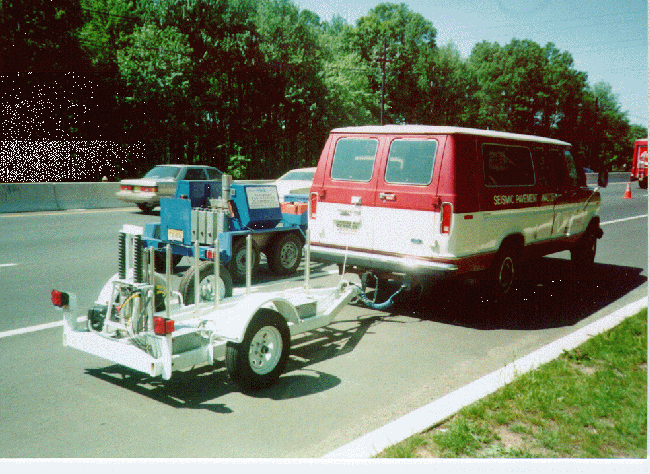
The SPA is the state of the art device for NDT of pavements and was developed at University of Texas at El Paso as a part of the Strategic Highway Research Program (SHRP). It can be also described as an integrated wave propagation device because it incorporates the five techniques namely: SASW, IR, UBW, USW and IE techniques. The SPA is designed and constructed to be a quality control tool, but more importantly to monitor conditions associated with pavement deterioration. The device enables evaluation of six elements that cause or contribute to pavement deterioration, 1) pavement moisture, 2) fine cracking, 3) subsurface problems, 4) voids or loss of support under rigid pavements, 5) overlay delamination, and 6) asphalt aging. All the above elements can be correlated to some of the values measured by the seismic methods implemented in the SPA device. Therefore, the SPA's capabilities can be described as those for: 1) evaluation of elastic moduli profile definition, 2) detection of moisture in the base layer (flexible pavements), 3) detection of voids or loss of support under joints of rigid pavements, 4) detection of overlay delamination, and 5) evaluation of fine cracking and asphalt aging. The SPA is in size and concept very similar to a Falling Weight Deflectometer (FWD), a device that has been in use for NDT of pavements for almost 30 years. The SPA consists of a trailer frame on which two pneumatic hammers and eight receivers are mounted. A larger pneumatic hammer (a low frequency hammer) is used to generate low frequency vibrations for the evaluation of properties of deeper layers. The smaller one (a high frequency hammer) is used to generate high frequency vibrations for the evaluation of properties and defects in the near surface layers and the overlay. Of eight receivers, five are accelerometers and three are geophones. Both the hammers and receivers are lowered and lifted pneumatically. Good coupling of the receivers to a pavement and good isolation from trailer vibrations, is achieved through a specially designed spring-retum air cylinders. Software for the SPA consists of three software subsystems for data acquisition, data interpretation and data management. The process of conducting a test is very simple. The device is placed at a testing point, hammers and receivers are lowered, and approximately 20 impacts first by the high and then by the low frequency hammer are applied, and signals recorded by different receiver combinations. Finally, both the hammers and receivers are lifted. The total testing time per point is about 45 seconds. Typically, evaluation is done in open highway conditions every 30 to 60 in. Preliminary assessment of the pavement condition in terms of elastic moduli, subgrade stiffness, presence of voids and overlay delamination, can be made on site. More refined data reduction and interpretation can be done in the office.

The PSPA is another state of the art device for NDT of pavements and concrete bridge decks. The PSPA device duplicates some of the capabilities of the SPA device in that it provides information only about the top layer of the pavement or a bridge deck. Primary applications of the device are in QA/QC of the top pavement layer, void detection, detection of bridge deck delamination, and monitoring of concrete curing. There are a number of advantages of the PSPA device in comparison to the traditional methods used in the inspection and QA/QC of bridge decks. The PSPA eliminates the need for strength tests on cylinders and drilled cores, and thus is a far more economical procedure. It also eliminates potential discrepancies between in-place concrete and cylinders that may result from application of different placement, compaction and curing conditions. The PSPA provides a far more reliable tool in bridge deck condition assessment than a current practice of chain dragging. It allows detection of delaminated zones in the bridge deck, as well as of zones of initial deterioration. The PSPA device consists of a hand-carried transducer/hammer unit, popularly called a lunch box, connected by a cable to a portable computer. The lunch box contains a pair of high frequency accelerometers and a high frequency electric solenoid impact source. Rubber isolators decouple the accelerometers from the box for frequencies above 100 Hz. (Typical frequency range of interest is 2 to 30 kHz). The cable carries power to the accelerometers and the impact source, and returns the signal to the data acquisition board in the computer. The device employs three seismic techniques: ultrasonic compression and surface wave, and impact echo. The PSPA device is most commonly used for quality control and condition assessment of bridge decks. These are made primarily through the evaluation of elastic properties (moduli) by the two ultrasonic methods, and the degree of delamination of the deck by the impact echo technique.